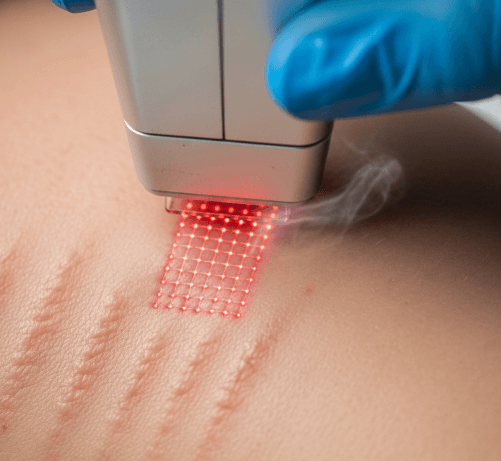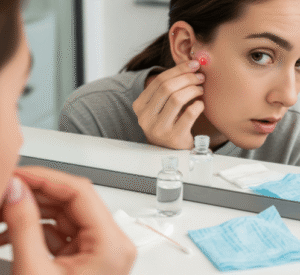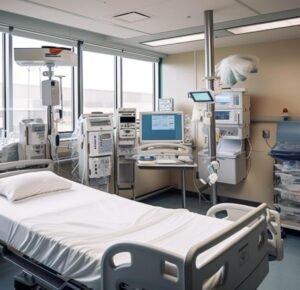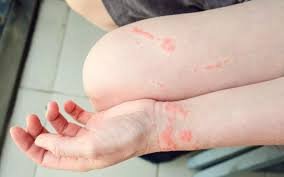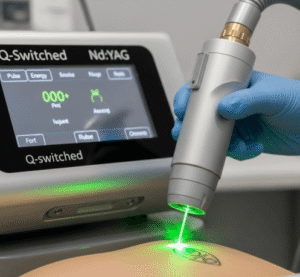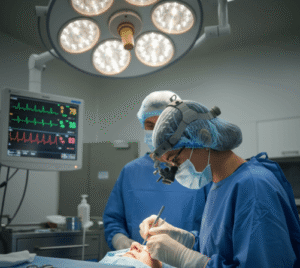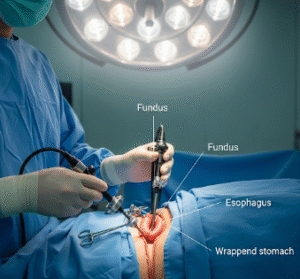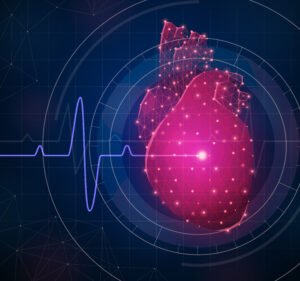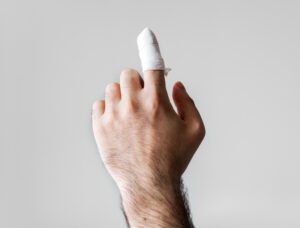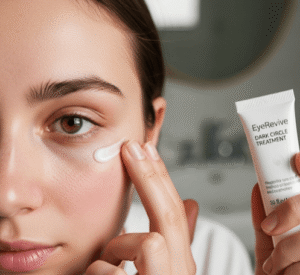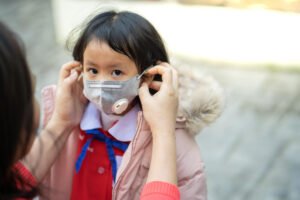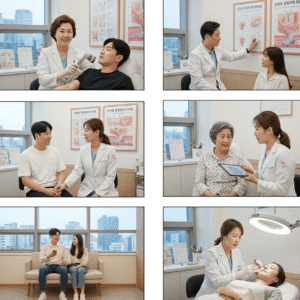What It Is
Defining Fractional Laser Treatment
→ Fractional laser treatment is a dermatological procedure that uses advanced laser technology to improve scar texture, thickness, and unevenness.
→ Unlike lasers that only target redness or color, fractional lasers create micro-columns of controlled thermal injury in the skin. This stimulates collagen remodeling and skin regeneration.
→ In Korea, fractional CO₂ lasers and erbium glass lasers are widely used for acne scars, surgical scars, burn scars, and hypertrophic scars where the main issue is roughness and uneven texture.
Key Characteristics
- Works by creating microscopic treatment zones (MTZs) while leaving surrounding skin intact for faster healing
- Improves texture, depth, and firmness of scar tissue
- Effective for atrophic scars, rolling scars, boxcar scars, and uneven post-surgical scars
- Considered one of the most powerful non-surgical methods for scar remodeling
Why It’s Done
Main Reasons for Treatment
➡ Texture Improvement – Smooths rough, bumpy, or depressed scars.
➡ Collagen Stimulation – Promotes new collagen production for firmer, healthier skin.
➡ Comprehensive Results – Improves both surface irregularities and deep dermal scarring.
➡ Confidence Boost – Reduces visible scarring and improves overall skin appearance.
➡ Combination Therapy Role – Often paired with microneedling, PRP (platelet-rich plasma), or scar injections for superior outcomes.
Alternatives
Non-Medical Options
- Chemical Peels → Mild resurfacing for surface irregularities but limited for deeper scars.
- Dermabrasion → Mechanically sands down uneven scar tissue but less precise than lasers.
- Scar Creams and Gels → Help softening scars but cannot improve deep texture.
Medical Alternatives
→ For patients unable to undergo fractional laser, alternatives include:
- Microneedling with RF → Similar collagen stimulation using micro-injuries and radiofrequency energy
- Subcision → Breaking fibrous scar bands beneath the skin for rolling scars
- Filler Injections → Temporarily raise depressed scars
- Surgical Scar Revision → Excision or reconstruction of problematic scars
- Intralesional Injections (Steroids, 5-FU, Botox) → Flatten thick scars but do not address textural issues
Preparation
Before Treatment
➡ Dermatology Consultation – Scar type, depth, and patient’s skin type are carefully assessed.
➡ Medical History – Patients must disclose history of cold sores, acne medication (e.g., isotretinoin), or tendency for pigmentation.
➡ Pre-Treatment Skin Care – Doctors may prescribe lightening creams or moisturizers to prep the skin.
➡ Avoid Sun Exposure – Tanning increases risk of pigmentation changes.
➡ Numbing Cream – Usually applied 30–45 minutes before procedure to minimize discomfort.
How It’s Done
The Laser Procedure
Step 1: Skin Cleansing
→ The area is cleaned thoroughly to remove oils, dirt, or cosmetics.
Step 2: Numbing
→ A topical anesthetic is applied and left for 30–45 minutes.
Step 3: Fractional Laser Application
→ The dermatologist selects proper laser type and settings:
- Fractional CO₂ Laser → Strongest for deep acne scars and thickened texture
- Erbium Glass Laser → Gentler, with less downtime, good for mild to moderate scars
→ The laser delivers precise micro-columns of heat into the skin.
→ Untreated skin between the columns speeds up healing.
Step 4: Cooling and Soothing
→ Cooling devices, masks, or hydrating serums are applied to calm the skin.
Step 5: Aftercare Guidance
→ Sunscreen, gentle cleansers, and healing ointments are prescribed for recovery.
Treatment Course
- Requires 3–6 sessions, spaced 4–8 weeks apart
- Results build up gradually as new collagen forms
Recovery
Immediate Recovery
- Redness and Swelling → Common and lasts 2–5 days depending on laser strength
- Micro-Crusting or Peeling → Small dark dots or mild flaking as skin renews itself
- Tightness or Warmth → Temporary sensations that subside in days
Long-Term Recovery
→ Visible improvements appear after several weeks, with scars looking smoother and less deep.
→ Final results continue to improve for 3–6 months post-treatment due to ongoing collagen remodeling.
→ Patients must maintain strict sun protection and moisturizing during recovery.
Complications
Possible Risks
- Post-Inflammatory Hyperpigmentation (PIH) → More common in darker skin types; usually temporary with proper care
- Infection → Rare but possible if aftercare instructions are not followed
- Prolonged Redness → Sometimes persists for weeks after stronger treatments
- Scarring → Very rare when performed by trained dermatologists
- Uneven Results → May require additional sessions or combination treatments
Treatment Options in Korea
Advanced Dermatology and Technology
Korea is a global leader in fractional laser therapy, with dermatology clinics offering state-of-the-art machines and combination-based approaches.
Why Korea Excels in Fractional Scar Treatment
➡ Latest Laser Systems – Clinics widely use top-tier CO₂ and erbium devices
➡ Scar-Specific Customization – Energy settings are tailored to scar type, depth, and patient’s skin tone
➡ Combination Therapies – Fractional lasers are paired with PRP, microneedling, injections, or subcision for maximum results
➡ Cosmetic Precision – Korean clinics emphasize both medical improvement and natural cosmetic blending
Popular Uses in Korea
- Acne Scars – Boxcar, rolling, and ice-pick scars are commonly treated
- Post-Surgical Scars – Fractional lasers help blend incision scars with surrounding skin
- Burn Scars – Improve texture and elasticity in burn-related scars
- Hypertrophic and Keloid Scars (after flattening) – Lasers smooth out residual roughness once thickness is controlled with injections
Patient Experience in Korea
- Sessions are usually outpatient and take 30–60 minutes
- Most patients resume light activities within 2–3 days (with makeup after 1 week for lighter treatments)
- Clinics provide aftercare kits with healing creams, sunscreens, and cooling masks
- Personalized multi-session programs track patient progress until desired results are achieved
Conclusion
Fractional laser for texture scars in Korea is one of the most advanced and effective treatments for improving scar smoothness and reducing unevenness.
By stimulating new collagen and remodeling existing scar tissue, it provides long-term improvements in texture, depth, and firmness.
Korean dermatology clinics lead in this field, offering cutting-edge technology, customized settings, and combination therapy that deliver safe, reliable, and cosmetically excellent outcomes.
For patients with acne scars, surgical scars, or burn scars, Korea provides some of the world’s best options for fractional laser scar treatment.

